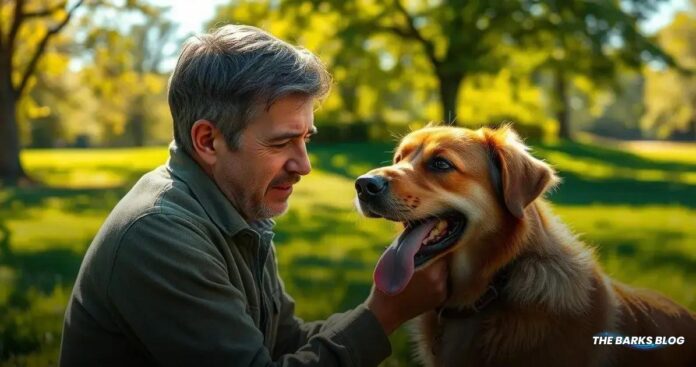Understanding dog breathing problems is crucial for pet owners, as normal breathing rates range from 20 to 35 breaths per minute. Signs of distress such as labored breathing, panting, or rapid breathing may indicate serious health issues, including windpipe blockages, diseases, breed-specific conditions, or heatstroke. Being aware of these symptoms and knowing when to consult a veterinarian can significantly impact your dog’s health and well-being.
Finding your pup panting after a walk or breathing fast while sleeping can be normal behavior. However, as puppy parents, we need to know when these signs indicate something more serious.

What Is Normal Breathing?
First things first – we need to know when your dog is breathing normally or if there is something to worry about. Typically, your dog should breathe at a rate of 20 – 35 breaths per minute, completely uninterrupted – without gasping or struggling to breathe in or out. Every now and then, just like us humans, you may notice your pup exhales deeply – similar to a sigh. This is completely normal and isn’t anything to worry about (it just might make you think your dog is bored of your company!).
It’s when your pup begins to struggle or has labored breathing – that’s when there could be a problem…

Common Types of Breathing Problems
There are several common types of breathing problems that dog owners should be aware of. Understanding these can help you identify when your pup may need medical attention.
Labored Breathing In Dogs
Labored breathing, also known as dyspnea, is characterized by difficulty in breathing in or out. This condition can arise from various causes such as trauma, a foreign object causing a blockage, or diseases affecting the nose, throat, windpipe, or lungs. Signs of labored breathing are often noticeable; you may hear your dog struggling to pull air into their lungs, and you might observe their chest and abdomen rising more than usual. Your pup may also lower their head to get as much air into their lungs as possible, often accompanied by an open mouth and flared nostrils.
Panting
Panting is a common behavior, especially after exercise or during hot weather. Dogs pant to cool down since they can’t sweat like humans. However, if you notice irregular panting followed by shallow, fast breathing, it could indicate a more serious problem. If panting is accompanied by a high fever, labored breathing, or pain, it’s essential to consult your vet, especially if your dog is overweight or has high blood pressure.
Fast Breathing In Dogs
Fast breathing, or tachypnea, differs from panting. While panting usually involves an open mouth and a hanging tongue, fast breathing occurs with the mouth either shut or slightly open. Each breath is shallow and quick, exceeding the normal rate of 20-35 breaths per minute. Similar to other breathing issues, rapid breathing can be caused by various factors, including dyspnea, low oxygen levels in the blood, or a blood clot.

What Causes Breathing Problems In Dogs?
Breathing problems in dogs can arise from various causes, and understanding these can help you identify when your pup needs veterinary attention.
Blockage
If something has lodged itself in your dog’s windpipe, it can lead to breathing problems such as dyspnea. Dogs love to chew on various items like sticks, toys, and even socks, which can sometimes get stuck in their throat, blocking the airway. Additionally, many dogs tend to eat quickly, which can result in food obstructing their windpipe and causing difficulty in breathing.
Disease
Several diseases and illnesses can cause your dog to struggle with breathing issues, particularly those affecting the lungs, windpipe, and throat. Some common conditions include:
- Lung disease, which can result from infections, fluid in the lungs, heartworm, or heart failure.
- Diseases of the windpipe or throat, which could be due to a damaged windpipe, tumors, or elongated soft palates.
- Pneumonia.
- Kennel cough.
Breed
Some dog breeds are more prone to breathing difficulties. Breeds like Boxers, Bulldogs, Boston Terriers, Shih Tzus, and Pugs are classified as Brachycephalic breeds, characterized by shorter skull bones that give them a flat face and short snout. These breeds may suffer from Brachycephalic airway syndrome (BAS), which can lead to abnormal breathing and airway issues.
Heatstroke
Heatstroke or heat exhaustion can significantly impact your dog’s breathing and respiratory health. This condition is extremely dangerous and can even be fatal if not addressed promptly. Always be cautious during hot weather and ensure your dog has access to cool, shaded areas.
Conclusion
Understanding the various types of breathing problems in dogs is essential for every pet owner. Recognizing the signs of normal versus abnormal breathing can make a significant difference in your dog’s health.
Whether it’s labored breathing, panting, or fast breathing, knowing what to look for and when to seek veterinary care is crucial. Always stay vigilant and proactive about your dog’s respiratory health, especially in breeds prone to breathing issues or during hot weather.
By being informed and attentive, you can help ensure your furry friend stays happy and healthy.
FAQ – Frequently Asked Questions about Dog Breathing Problems
What is considered normal breathing for dogs?
Typically, a dog should breathe at a rate of 20 – 35 breaths per minute without gasping or struggling.
What are the signs of labored breathing in dogs?
Labored breathing is characterized by difficulty in breathing, noticeable chest and abdomen movement, and often an open mouth with flared nostrils.
When should I be concerned about my dog’s panting?
If you notice irregular panting accompanied by shallow, fast breathing, high fever, or pain, it’s important to consult your vet.
What can cause fast breathing in dogs?
Fast breathing, or tachypnea, can be caused by dyspnea, low oxygen levels in the blood, or a blood clot.
Which dog breeds are more prone to breathing problems?
Breeds like Boxers, Bulldogs, Boston Terriers, Shih Tzus, and Pugs are more prone to breathing issues due to their brachycephalic structure.
How can heatstroke affect my dog’s breathing?
Heatstroke can be extremely dangerous and may lead to respiratory distress. It’s crucial to monitor your dog during hot weather to prevent overheating.




